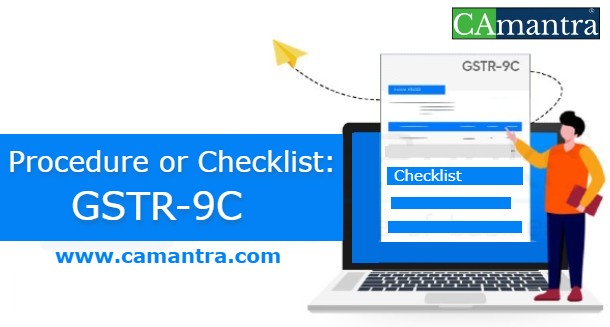Every registered person whose turnover during a FY exceeds the prescribed limit of INR 2 crores shall get his/her accounts audited by a CA or a cost accountant.
GSTR-9C is a statement of reconciliation between:
- The Annual Returns in GSTR-9 filed for a financial year
- The figures according to the taxpayer’s audited annual Financial Statements.
It can be presumed to be similar to that of a tax audit report evolved under the Income-tax act. It will comprise of gross & taxable turnover as per the Books reconciled with the respective figures according to the consolidation of all the GST returns for an FY.
Thus, any differences raising from this reconciliation exercise will be reported here with the reasons for the same. The certified statement shall be issued for every Goods and Services Taxpayer Identification Number. Therefore, for a PAN there can be various GSTR-9C forms to be filed.
*As per the CBIC notifications the limit is increased to Rs 5 crore for the GSTR-9C of FY 2018-19 and FY 2019-20.
Who are not required to file GSTR-9C & GSTR-9?
These persons are not required to file GST Audit (GSTR 9C) & GST Annual Return (GSTR-9)-
- Tax deductor
- Tax collector
- Input Service Distributor
- Casual taxable person
- Non-resident taxable person
- Person supplying Online Information Database Access &Retrieval (OIDAR) service from Place outside India [Notification No 30/2019 Central Tax Non Rate]
- Foreign Airlines [Notification No 30/2019 Central Tax Non Rate]
GSTR-9C
(Due Date– 31st Dec. of the Next financial year)
| Turnover | GSTR 9 | GSTR 9C |
| Less than INR 2 crores | Optional | Not required |
| More than INR 2 crores upto INR 5 crores | Compulsory | Optional |
| More than INR 5 crores | Compulsory | Compulsory |
What are the Checklist for GSTR- 9C?
- In First step, Prepare GSTR-9 which should be in a ready-to-file state.
- Details of Turnover (Taxable, Exempted & Non- GST Supplies) according to the audited financial statements.
- Unbilled revenue Details at the beginning of the FY and details of unbilled revenue at the end of the FY.
- Details of advances received at the beginning of the FY and the end of the financial year.
- List of debit/credit notes issued during the period and reconciliation of the same with books of
- List of Invoices on which Reverse Charge Mechanism was applicable and considered in Financial Statements.
- Details of Rate wise outward supplies along with the tax amount
- Make sure that the valuation rules are followed for the above points.
- Details of Additional amount payable but not paid because of the discrepancies in the above points.
- ITC Details availed according to the audited Annual Financial Statements.
- Details of Input Tax Credit booked in earlier FY claimed in current FY.
- Details Input Tax Credit booked in current FY to be claimed in subsequent Financial Year
- Details of Input Tax Credit claimed under different heads like (Purchases, Freight, Power and fuel, Royalties, Bank Charges, etc.)
- Details of Tax payable if there are any discrepancies in points 11, 12, 13 & 14.
- Recommendations of auditor if any on the discrepancies in the above points.
- Management Representation Letter needed from the management in the specified format.
- Fill all the details in the GSTR-9C offline tool and Validate each sheet
- Create JSON File, Attach DSC of Auditor and save JSON file
- Upload these file to GST portal-Signed JSON file, Balance Sheet, Profit & Loss Account or Signed Trial Balance.
- File by attaching the Digital Signature Certificate of the Taxpayer

